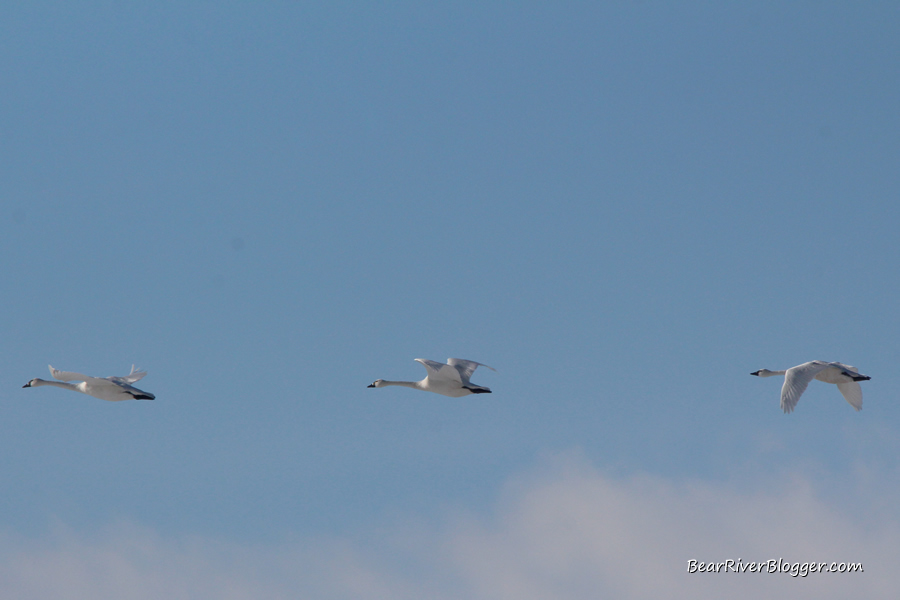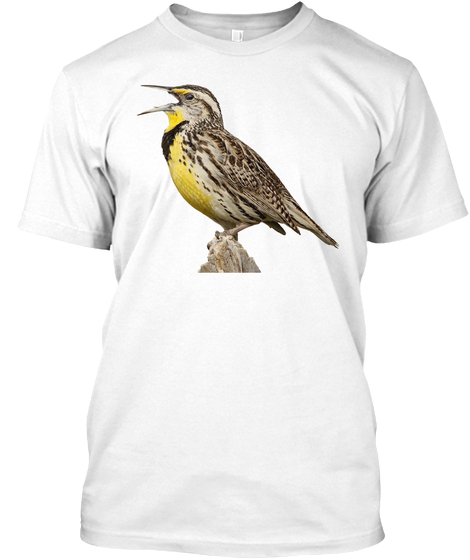Each year, thousands of tundra swans migrate into Utah.
This happens not once but twice per year as these majestic birds migrate to and from their breeding grounds in western Alaska during both spring and fall migration.
The Bear River Bird Refuge is a major migratory resting place for this western population of tundra swans and offers the bird enthusiast a great opportunity to view thousands of these beautiful birds for a short period during migration.
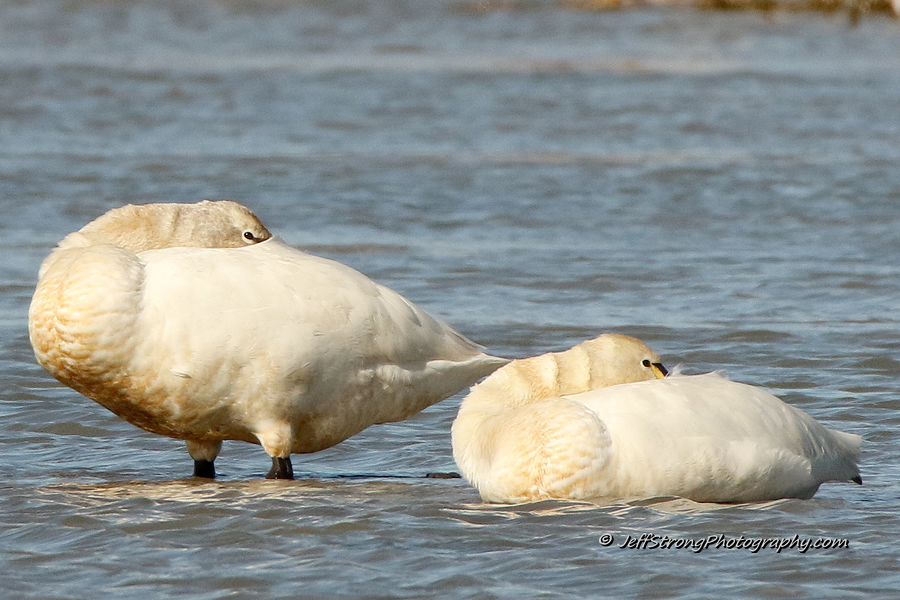
If you are like me, bird watching is not just a hobby but a passion.
I have always been fascinated with birds and even more so with how many of our avian friends migrate each spring and fall and how far some of them travel during migration.
Some birds, such as the arctic breeding tundra swan, offer only brief glimpses of themselves each year during their long migration so us bird watchers have to be ready when these opportunities arise.
The tundra swan is undoubtedly one of my most favorite birds to observe and photograph on the Bear River Migratory Bird Refuge.
During their bi-annual migration, thousands of tundra swans visit the nearly 80,000-acre federally managed wildlife refuge located in northern Utah and, for a brief few weeks during spring and fall, bird watchers are treated to a feast for the eyes as well as the ears.
These beautiful birds can be quite vocal, as well as animated, during their stop on the Bear River Bird Refuge.
This is most noticeable during spring migration as pairs of tundra swans can be seen courting and defending their mates on these layovers while heading back to the arctic tundra in western Alaska, leading to an interesting display of sights and sounds for both the birder and photographer to enjoy.
When To View Tundra Swans
Tundra swans, often referred to as whistling swans, can be seen migrating through the Bear River Migratory Bird Refuge twice per year.
You can view them during fall migration as they come through the refuge on their way to California, peaking in mid-November when their numbers sometimes can reach upwards of 60,000 birds.
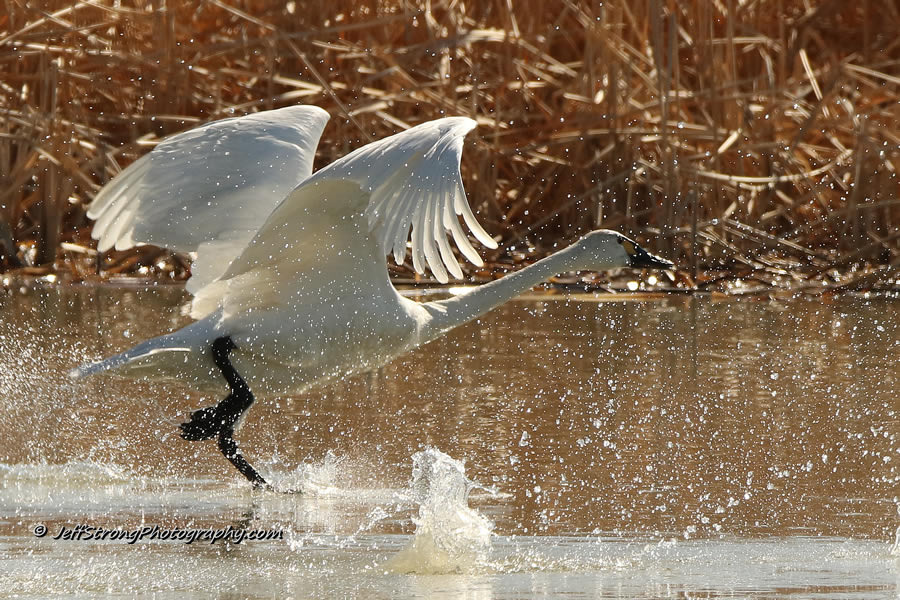
Visibility can be somewhat limited this time of year, however, as waterfowl hunting season is in full swing, thus pushing most swans towards the closed areas where any public entry isn’t allowed.
Swans can be seen most years on the far northern units of the refuge and adjoining private lands during fall migration with the aid of a spotting scope or binoculars.
The refuge has recently built a viewing tower in the maintenance shed parking lot to help aid in viewing swans in the closed areas.
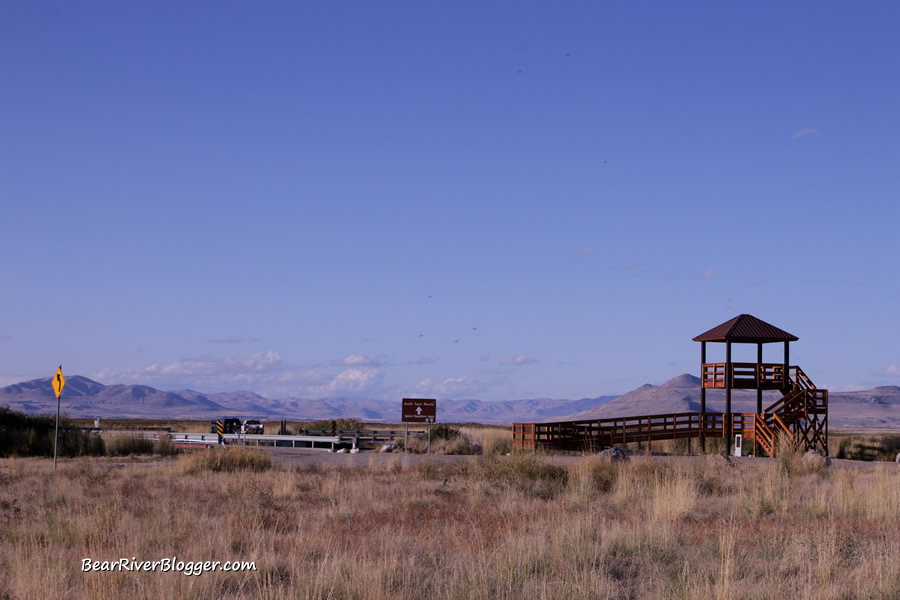
The best time to view tundra swans in Utah is during the month of March, during their annual pilgrimage northward in the spring.
Small flocks of swans start showing up on the refuge in late February, typically a couple weeks before the refuge wetlands start to thaw.
March, however, is the best month for peak times to view the tundra swan on the Bear River Migratory Bird Refuge. In fact, years with a slow but steady thaw can be the most exciting for us bird watchers.
Tundra swans love to sit on the ice near open water and, depending on how and where the ice melts on the refuge, some very close viewing opportunities can sometimes be had for the lucky observer during early March.
Where To View Tundra Swans
The Bear River Migratory Bird Refuge auto tour route is the best location to see as well as photograph tundra swans in northern Utah.
Depending on current weather conditions, each year offers slightly different viewing opportunities for tundra swans on the refuge, but without question, the refuge is by far the best place to view and also photograph migrating tundra swans in Utah.
The 12-mile self-guided auto tour route is undoubtedly the best and most consistent place to see swans on the refuge during the spring.
It is a winding gravel road that travels through some of the marshes for visitors to get a great view of the birds which reside on the refuge.
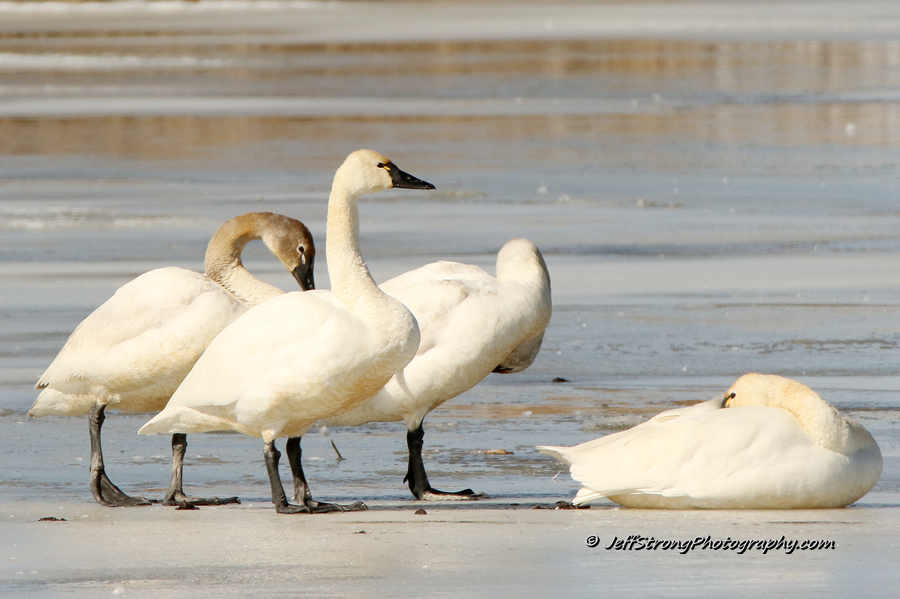
But the auto tour route isn’t the only place swans can be seen. I have personally been 50 yards away from tundra swans on Forest street during wet years where swans have found shallow seasonal ponds to roost in alongside the road.
Two duck hunting clubs along Forest street, as well as some seasonally wet areas on the refuge, can also offer some good springtime swan viewing opportunities from the paved road as you travel down Forest street to the public viewing area and auto tour route.
These areas are closed to the public but are in close proximity to Forest street so viewing them from the road isn’t a problem with binoculars or spotting scopes
Where do the tundra swans migrate from?
There are basically two general populations of tundra swans in North America.
Both the eastern and western populations breed in the far reaches of North America in the arctic tundra, which includes the northernmost sections of Canada and Alaska.
Our western population breeds mainly in the northwestern areas of Alaska.
A large portion of these swans migrates through the interior part of the western United States, hitting several large staging areas in Montanna, Idaho, and Utah, such as the Great Salt Lake marshes and the Bear River refuge, before arriving in California to spend the winter.
Do tundra swans fly at night?
It is quite common for swans to migrate during nightfall.
They can and do migrate during daylight hours as well, however.
I have personally seen them migrate during daylight hours as they leave the refuge to head north during spring migration and I also consistently hear them as they migrate during nightfall, calling overhead as they approach the refuge during the fall migration.
Contact The Bear River Migratory Bird Refuge
If you are planning on visiting the Bear River Migratory Bird Refuge to view the migrating tundra swans I would suggest contacting the refuge office to get more information about the refuge and what can be expected during your visit.
The refuge is fairly easy to find with the headquarters located just west of Brigham City, Utah along Interstate 15 at the Forest Street exit, about an hour north of Salt Lake City.
Each year the weather plays a big part in when swans arrive and leave the refuge and the USFWS personnel can give you the latest updates on swan sightings as well as overall conditions of the refuge.
Visit their website for more information about the refuge and to contact refuge personnel about the refuge.
Each year the refuge offers a swan day event, typically on the second Saturday in March.
It is a great time to visit the refuge to view and learn about tundra swans as well as to attend a free beginning outdoor photography workshop taught by myself at the refuge headquarters.
More information about the swan day event and activities will be made available as we get a little closer to March.
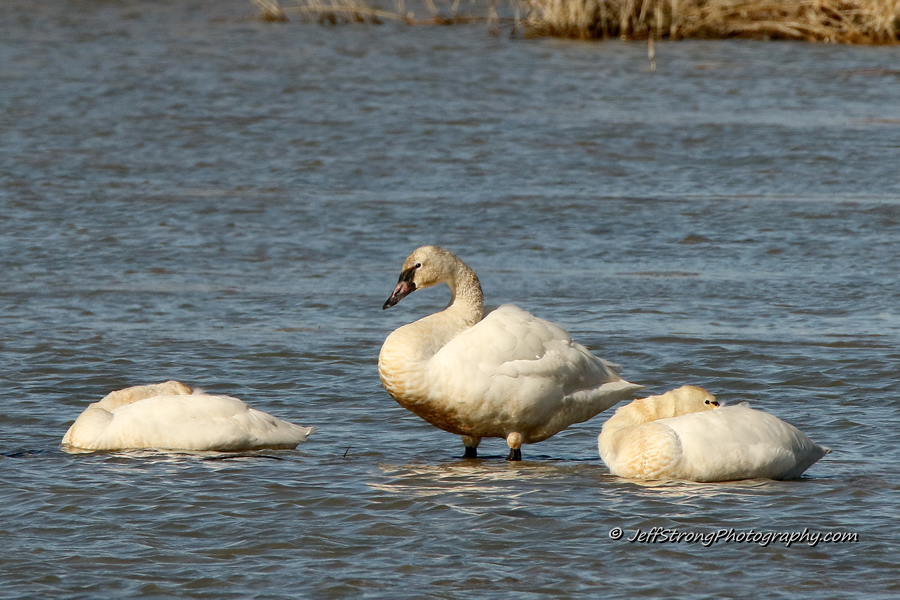
What To Expect
You might be asking what can one expect from a trip to the Bear River Migratory Bird Refuge.
From my own personal experience, I can honestly say most times on the refuge I have had great bird-watching moments.
Depending on the time of year, some trips have led to more birds than others but some trips have led to better birding experiences despite seeing fewer birds.
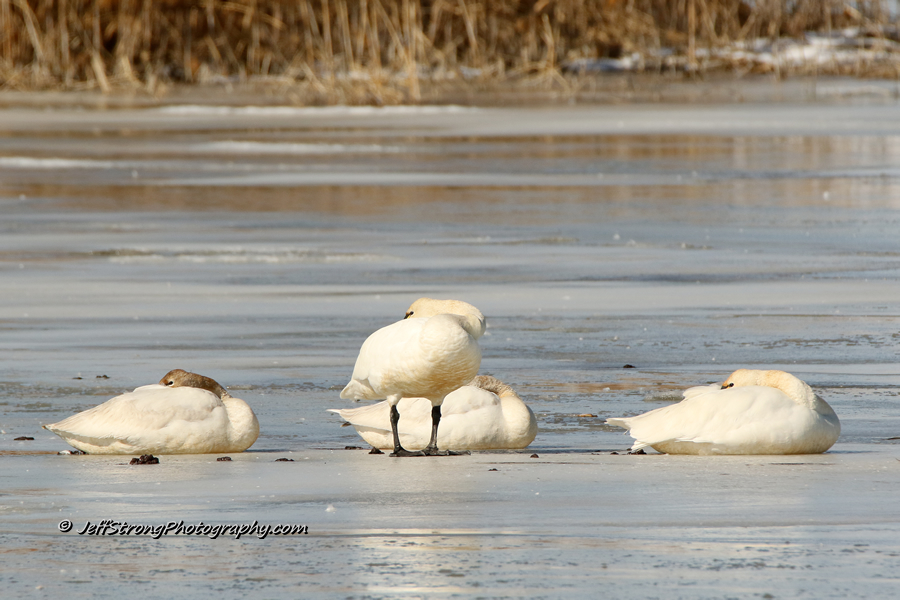
Weather and seasonal factors such as nesting and migration, just to give a few examples, have great influences on birds and bird watching.
It seems every year is a bit different than the last but that is what I like about bird watching and why it never gets old.
One never really knows what to expect until we head out and go bird watching.
If you plan your trip during the refuge educational center’s visitors hours I highly recommend starting your trip there first. They have a great nature display, a fantastic movie about the refuge, a nature-themed gift shop, and a board showing the most recent bird sightings.
From there it is a short 12-mile drive down Forest street to the Bear River Migratory Bird Refuge self-guided auto tour route. Forest street itself offers great bird-watching opportunities.
I have seen barn owls, peregrine falcons, long-billed curlews, bald eagles as well as a wide variety of other birds throughout the year on Forest street.
As noted before, spring can also be a time when tundra swans might be found on small seasonal ponds on Forest street, depending on current weather conditions.
Once you travel all the way down Forest street you will go through a gate and end up at a large parking lot.
From there the road turns to gravel and is the start of the auto tour route. A newly constructed wildlife viewing tower is also located just inside the main refuge gate and offers a higher perspective to view the marsh.
I would suggest traveling the refuge auto tour route slowly.
It not only minimizes any stress and unwanted effects on the birds but also makes it easier to find birds along the way.
Drive slow and keep an eye out on both sides of the gravel road for birds.
Later in the year, for example, egrets and herons can easily be seen right next to the road as well as blackbirds, wrens, and a host of other birds perched in nearby vegetation.
Lastly, even though the Bear River Migratory Bird Refuge headquarters is only minutes away from Brigham City, Utah the refuge is a fairly large and very remote location. It is a good idea to always be prepared for emergencies, just in case the unexpected happens.
I have seen a couple of vehicles break down on the auto tour route during the hot summer months so food and water, as well as bug spray, are always good to have on hand.
I have found my cell phone gets decent reception even way down on the auto tour route but it is always a good idea to be prepared just in case technology fails.
My father would always say it is better to have it and not need it than to need it and not have it. This is always the case when venturing out in nature.

For continued information about the refuge and surrounding areas, subscribe to my blog for email notifications when future blog posts come out.
Visit the Bird Shirts and More online store for t-shirts, sweats, and hoodies for men and women. Use coupon code save20 to save 20% on all products.
